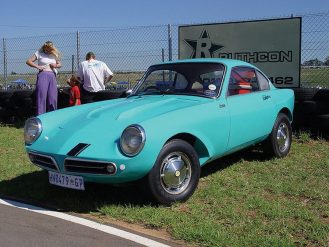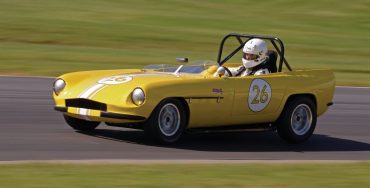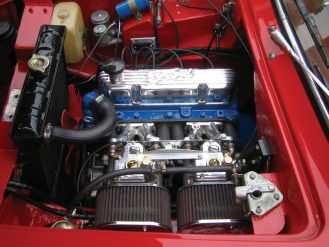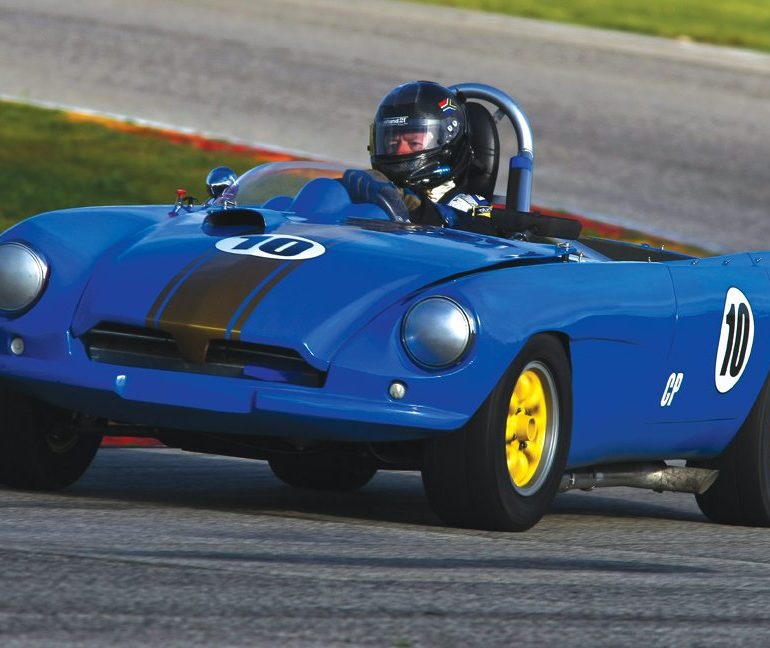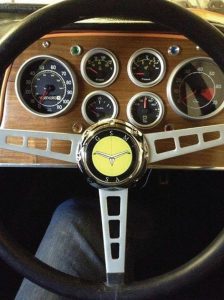In the heady, but risky, days of British specialist sports car manufacture in the late 1950s, the intrepid characters involved could have been forgiven for not believing that there was a thriving company in Cape Town, South Africa, building a sleek two-seater called the GSM Dart. Not only was it true, but the Dart was good looking, it was fast, had phenomenal roadholding and was selling well!
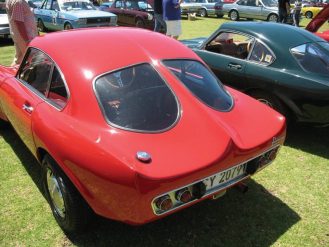
The saga began when one of the three eventual partners in the Dart project, Bob van Niekerk, enrolled at the Stellenbosch University, near Cape Town, in the late 1940s to study mechanical engineering. He met up with fellow student Willie Meissner and the two car enthusiasts became firm friends and developed a burning ambition to build a world-beating South African sports car. Meissner soon got bored with mechanical engineering and as he was keen to learn more about automotive engineering he found his way to England. Bob stayed on and after qualifying joined a company importing Magirus-Deutz trucks and building agricultural implements. His racing career started with a highly modified and indecently quick Peugeot 203.
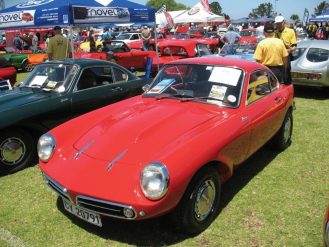
In the meantime, Willie had written from England to inform Bob that he had found a wonderful new material called fiberglass for “their” car. The body of their dream car had been a problem, as South Africans did not possess the skills of the Brits and Italians to shape aluminum bodies. Excited and motivated by this new discovery, Bob sold the Peugeot and set sail for England in 1956 and the two set up a flat in Earls Court (where else for Colonials?).
The would-be South African car-building duo took a course in fiberglass application and once they had the basic know-how, started working on the model of their car. By his own admission, Bob was not a stylist, and Willie assured him that he had just the man for the job—a young South African designer, by name of Verster de Witt, who was working for Rootes, in Coventry, on the Sunbeam Alpine project.
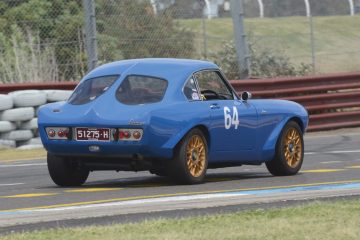
The arrangement was that Bob and Willie would build quarter-scale models out of modeling clay, each working on his own half of the car. Verster would come down over weekends to look at the two different styles and would invariably tear their work apart and complain about non-complimentary lines. Eventually, 13 models were made before the final design was unanimously agreed upon.
One evening, to take a break from their modeling, Bob and Willie went to a nearby pub in Earls Court. They met up with fellow South African, Ron Hickman, who in later years would design the Lotus Elan and the Black & Decker Workmate. After a few beers, they invited Ron to have a look at their model. Impressed, Ron gave them the thumbs-up.
Before the full-scale mock-up was complete, Willie set sail for South Africa and set up business in Paarden Eiland, an industrial complex close to the Cape Town harbor. Bob stayed behind to complete the mould in a rented garage in Glenelden Mews in Streatham, South London. It was made from wooden formers and plaster of Paris and when it was finished a body was made that Bob sold for £75 to fund his trip and that of the buck back to South Africa. He booked the buck in as personal baggage and recalls that, “In those days Union Castle was quite casual about baggage!”
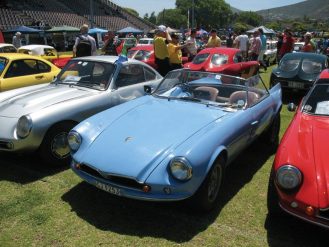
The Glassport Motor Company (Pty) Ltd (GSM) was formed with De Witt, Meissner and Van Niekerk being equal partners.
“Unlike today, when kit car and specialist manufacturers have a mind boggling range of donor vehicles, engines and parts to choose from,” says Bob, “We had little choice at the time. As Ford seemed to be the company supporting the little guys in England and as it had a solid infrastructure in South Africa, having been there since 1924 with the Model-T, we chose Ford.”
The original Dart used 100E mechanicals, a side-valve, 1172-cc engine, a three-speed gearbox, Anglia and Prefect diffs, but disc brakes at the front. The front suspension layout was somewhat unusual in that it consisted of a transverse leaf spring, pivoted at two points on the upper crossmember to give it a semi-independent effect, and two shortened Prefect MacPherson struts. Rear suspension consisted of a live axle with double trailing arms per side, an A-bracket and coil springs. Armstrong shocks were fitted and the chassis was constructed from large-diameter round steel tubing. Full instrumentation was by Smiths and electrics courtesy of Lucas. Side screens were supplied and a hardtop with slanted rear window eventually offered as an extra. The Dart team wondered if Ford later copied their idea for the Anglia!
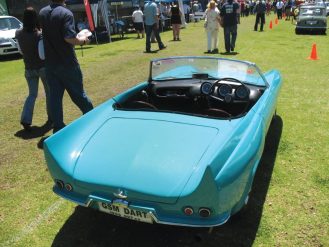
Accepting that the old adage of “racing improves the breed,” two racing Darts were built for Bob and Willie, one red and one black. It was only then that the design trio of De Witt, Meissner and Van Niekerk finally decided on the name of “Dart.” It was a short, concise name, which slipped of the tongue easily and the car was in fact dart-like in shape. With some stretch of the imagination it could be said that there was a family connection with the Sunbeam Alpine, given de Witt’s involvement with the design of the Rootes car. Both cars also had distinctive tail fins, a popular feature of the time, which the Americans took to extremes!
When they were in England, Bob and Willie had met John Passini who worked for Willment, and through him ordered two Willment inlet-over-exhaust heads for the 1172 Ford engine and these were fitted to the two racing Darts. The two Darts, which weighed 500 kilograms, won their first race on New Year’s Day 1958 in Cape Town at the Gunner’s Circle track (now an industrial complex known as Epping 1) by a long margin, and thereafter cleaned up with regular monotony. Willie was a good driver, but as he was interested in new ideas and innovations his racing career was short-lived. Bob, however, enjoyed his racing and drove for many years thereafter, including a few South African Grands Prix in a Lotus.
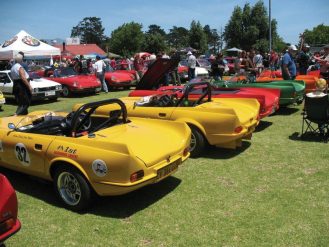
The Dart features prominently in today’s South African classic car scene.
Only two cars were produced in 1957, but by the end of 1959, 41 cars had been sold for both racing purposes and road use. By that time it was felt that the car—in particular, in view of its Ford heritage—could enjoy a market in England and Bob set sail for Northern climes once again with Willie staying behind as he was due to get married. A complete body and chassis kit accompanied Bob on the Union Castle liner.
In England, Bob was to manage the local operation, but upon his arrival he discovered to his dismay that Meissner’s contact, who had agreed to
finance the UK company, had been sent to prison! Undaunted, Bob looked for another financier and was introduced to a Mr. John P. Scott at Winsor Garage on the London Road, in West Malling, in Kent. Scott agreed on a deal and said he would fund the parts required such as the engine, gearbox, suspension and tires. However, his conditions were seemingly impossible in that Bob had to build the car in 10 days, he had to enter it in a race at Brands Hatch and win the race!
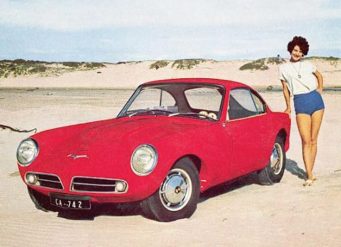
Bob accepted the challenge and hot-footed it to Ford at Dagenham where he asked the factory to sell him a new 105E OHV engine and all the other bits with which to complete his car. Bob worked day and night to complete the Dart and even had time to borrow spray equipment with which to spray the car light blue. Willment supplied another head, a hot cam and racing carbs, and by the Friday before the race the car was road tested. Willment’s John Passini had given Bob a great deal of help to prepare the car.
On the Saturday, April 18, 1960, Bob found himself in the middle of the grid on a strange circuit but worked his way up to 2nd place behind the favorite, an Austin-Healey Sprite. He managed to pip the Sprite to take 1st place through Paddock Bend and went on to win!
A delighted Mr. Scott was true to his word and consequently GSM established a production facility in England. A new 5,000-square-foot factory was built near the Winsor Garage and parts ordered for 50 cars. As the name “Dart” was registered to a bicycle company, the car was renamed the “Delta.” One wonders how Daimler subsequently managed to use the name.
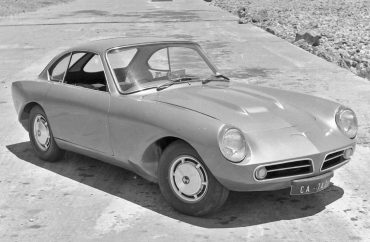
In 1960, a Dart was sent to the New York Motor Show, and was voted second most interesting car after the Jaguar E-Type!
Meanwhile, Bob campaigned his tough little Dart all over Europe and set lap records in the 1,000-cc class at almost every circuit. His record stood at the Brands Hatch short circuit for seven years before it was broken! At speed trials in Belgium, on the Jabbeke highway, the car achieved a top speed of 133 mph. At Clermont-Ferrand, Bob drove alone in the six-hour Le Mans-type race and finished 14th overall out of 56 cars.
The car was driven to all the races and in a three-hour race at Silverstone Bob was so far ahead that he stopped for a Coke! In another event he was also so far ahead that he lit a cigarette and drove around the circuit smoking. This sort of behavior was unheard of and Bob had the race officials and marshals going crazy!
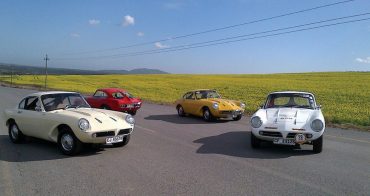
There were victories at Goodwood, Silverstone and Aintree, with the cars driven by Jeff Uren and Keith Holland. The Dart’s successes created quite a demand for the car and even Colin Chapman showed an interest.
Chapman made some snide remarks about the Dart’s front suspension, but told Bob that he couldn’t work out why he was beating his Sevens. Bob pointed out that the streamlined front end of the Dart could have had an advantage over the blunt nose of the Seven. In fact, so little was known about streamlining at that time.
Altogether, 76 Deltas were produced in Kent, with a few being exported to Canada and the USA. Prices had to be pegged in the UK to compete with low-cost, mass production sports cars, an area in which the Brits were world leaders. Unfortunately, Mr. Scott’s auditors ruled that the company wasn’t making money and if it did not stop there would be ruination. When Bob returned to Cape Town, Willie had bought a service station and consequently Bob took over his shares in GSM to concentrate on running the Dart production and to develop a new coupe, the Flamingo.
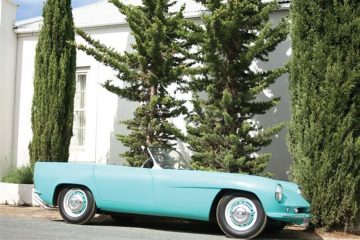
The Flamingo coupe was developed directly off a Dart body and once again in a “coals to Newcastle” bid, the car was created with England in mind. The Flamingo was designed prematurely for the Essex V6, which Ford had planned as early as 1960, but as this engine only became a reality in 1966, Bob opted for the 1760-cc Ford Taunus engine. With the benefit of hindsight, the German power plant was not ideal, but GSM was contracted to Ford of South Africa and the company had in any case become synonymous with Ford engines and components.
The Flamingo was an instant success and some 150 cars were sold, in fact, 34 more than Dart’s total of 116 units.
Several racing Darts were fitted with a variety of engines, including Alfa Romeo, Coventry-Climax, Volvo and V8s. Local driver and former SA Champion Bill Jennings even fitted a Porsche Carrera twin-cam, which drove through the rear wheels!
The Darts and Flamingos also had an illustrious local racing career during which not one driver was ever killed. A few, however, suffered only minor injuries which is proof of the car’s phenomenal strength and road-holding abilities. In 1959, a Dart driven by Hugh Carrington and Chris Fergusson won the Nine Hour ahead of a Porsche Speedster, an MG and a Porsche 550 Spyder. Bob and Piet van Niekerk (no relation) drove a Dart to victory in the 1963 Cape Four Hour race at Killarney. In the 1964 Pietermaritzburg Six Hour race, Piet van Niekerk and Don Philp drove a Flamingo into 2nd place behind a Lola-Climax, followed by Dennis Joubert and Peter Gough in a V8 Flamingo. In the 1964 Cape Three Hour at Killarney, Piet van Niekerk won in a Flamingo driving alone—a Dart finished in 3rd place. In 1966, Dennis Joubert and Clarrie Taylor won the Cape Three Hour in a Dart.
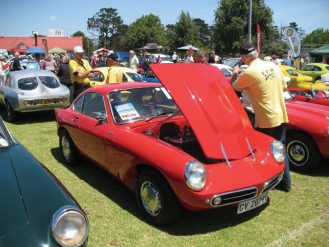
In 1963, GSM experienced the age old problem faced by many specialist car builders before—a shortage of working capital. Eventually a deal was struck with Bonuskor, a subsidiary of the insurance giant Sanlam, established to invest in entrepreneurial projects. Bonuskor acquired a 51 percent stake in GSM, and Paddy Goodall was appointed MD. With a new injection of capital, Bob set about building the ultimate South African car, a V8 Flamingo, powered by a 221-cu.in. Ford V8. The prototype was raced and once again the new GSM car generated enormous interest as South Africans have had an on-going love affair with the grunt of V8s!
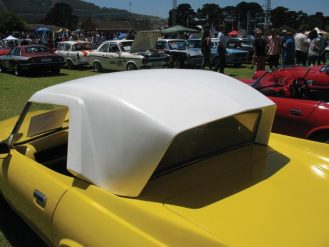
In 1964, Bob van Niekerk and Paddy Goodall took a white Flamingo to England for demonstration purposes. This writer, who had in the meantime left Porsche to join Stirling Moss’s Paint-a-Car System in London, arranged for Moss to test drive the Flamingo. The South African trio arrived at Shepherd Street early one Saturday morning, and were met by Moss still dressed in pyjamas and dressing gown! Quite unperturbed Moss took off for a spin around Hyde Park in his bedroom attire. He liked the car and the handling, but questioned its chances, as a car from South Africa, against the likes of AC, Diva, Ginetta, Lotus, Marcos and TVR.
Sadly, in 1965, Goodall decided that the South African market could not support cars like the Dart and the Flamingo, and the operation was closed down. On that day, Bob turned his back on the motor industry and motor racing to concentrate on boat design. He has since designed more than 100 world-class speed boats, off-shore power boats, deep sea boats, catamarans, patrol boats and pleasure cruisers. He was also involved in the design and construction, in Cape Town, of Sir David Brown’s giant luxury catamaran.
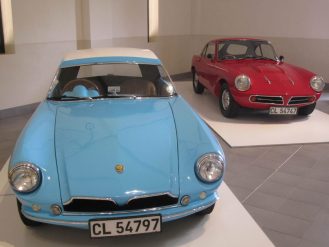
In 1970 Willie Meissner, who had in the meantime developed his own range of Ford tune-up equipment, as well as a single overhead cam conversion for the Kent engine and a range of lubricants, sadly died in a road accident close to Cape Town’s Killarney Circuit.
Bob still owns both a metallic blue Dart and the original prototype V8 Flamingo as a constant reminder of his bold motoring venture of yesteryear.
In July 2002, Gordon Murray, technical director of McLaren Cars, bought a yellow 1964 Flamingo from the author and told him of the F1 mechanics pouring all over the South African classic when it was wheeled into the hallowed halls at McLaren.
